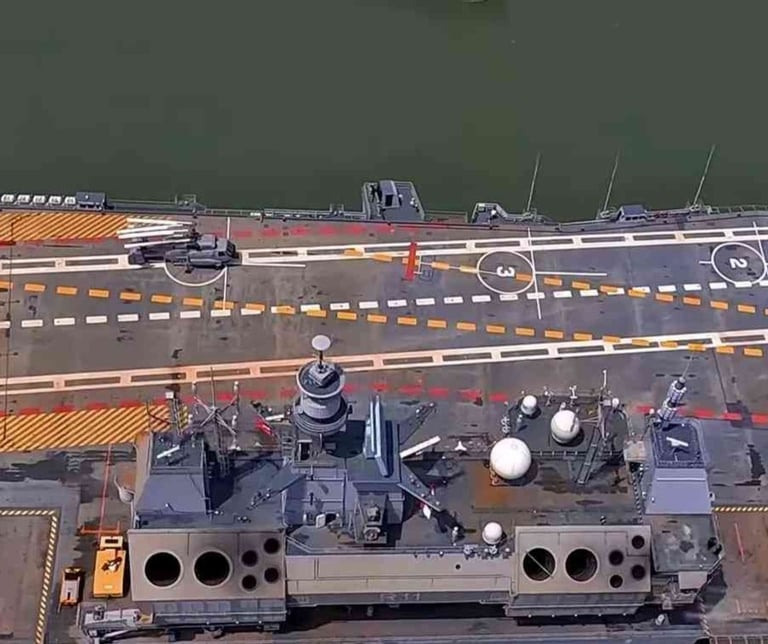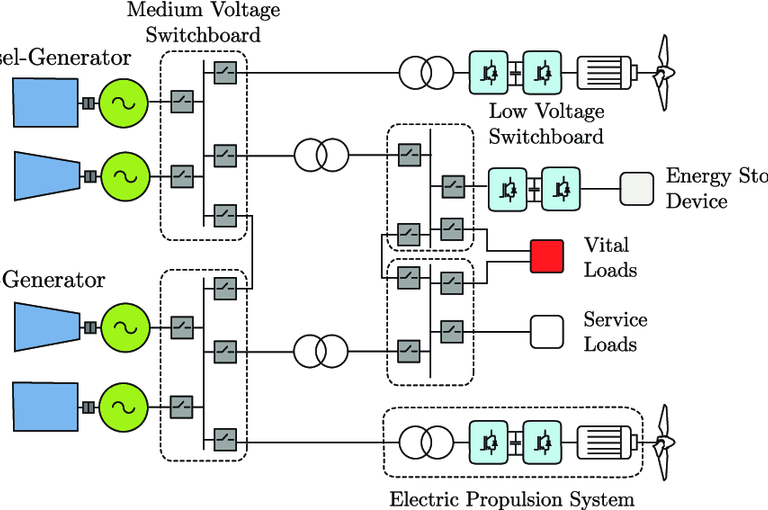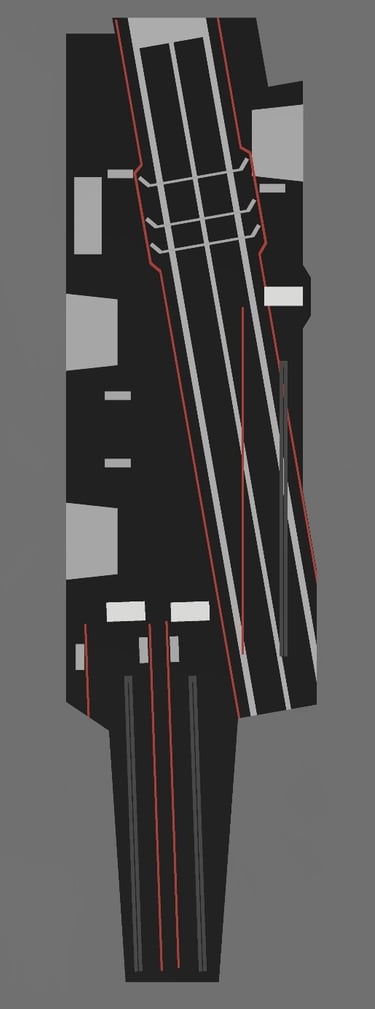IAC-1 Repeat Order or a Vikrant-sized CATOBAR?
Adm_Kenobi
3/6/20234 min read
Indian Navy Chief of Naval Staff Admiral R. Hari Kumar revealed in a media address on 3rd December 2022 that IN is evaluating its option for an IAC-2, leaning towards a repeat order of “IAC-1 with more modern, more futuristic capabilities”. In February 2023, on the sidelines of Aero India 2023 the CNS stated, “While placing a repeat order for the INS Vikrant-sized carrier, the Navy will continue to study the need for a larger and more capable carrier”.
This has sparked a debate in the Indian defence community about the possible options that IN should go with. Two options are briefly evaluated in this weblog – an IAC-1 repeat order and a Vikrant-sized CATOBAR, with some changes that should be considered for the next IAC.
IAC-1 Repeat Order
One thing I’d like to clear up before talking about this option is that a 1-1 sister ship of IAC-1/Vikrant cannot be built because a key system of Vikrant, naval MF-STAR, has been banned effective 31st December 2022. Going for a repeat order with a few different subsystems is the only possible way. LRDE has been working on an indigenous replacement for MF-STAR, the indigenous long-range multi-functional radar which will be featured in the next generation of IN warships. The IAC-1 repeat order can feature a version of this radar.
Another subsystem that is on the indigenization list is the aviation complex. An indigenous aviation complex will allow for greater flexibility and independence in terms of aircraft integration, ending the reliance on Russia for this key subsystem. It has been pointed out by many critics that going for the small 14×10m aircraft elevators on IAC-1 have limited the future options of aircraft that can operate off of IAC-1/Vikrant. Going with the same 14×10m elevators on IAC-2 would not be a wise decision, even if TEDBF fits on the elevators. The Indian Navy can either go with a larger set of elevators capable of handling 2 fixed wings in a single go, or slightly enlarged elevators of size >16×12m capable of handling 1 aircraft per elevator.


A picture showcasing the exhaust position, credit – Indian Navy
Jet blast deflector (JBD) is another system which both the IN carriers lack. The addition of JBDs on IAC-2 can allow the area behind the launch position to be utilized either as a staging area for successive launches or a parking area for 2-3 fixed-wing aircraft, increasing the operational efficiency and capability.
An additional weapon elevator near the launch position can also help increase the sortie rate and reduce the amount of time wasted in moving weapons across the landing area.
A smaller, more compact island structure with integrated sensors would help reduce weight and provide more space for flight operations. This will be a tough challenge as the exhaust vents are on the edge of the island, and changing the island design would require WDB to change the internal structures for the exhaust, miniaturization of sensors is a challenge on its own, it will be a time-consuming change, but worth considering.
INS Anvesh is Indian Navy’s first medium voltage (MV) integrated fully electric propulsion (IFEP) vessel, IN is considering IFEP/hybrid propulsion for its future fleet ship, including the LPDs, so it is natural for IN to consider IFEP for IAC-2, even if doesn’t feature catapults. Improved automation and indigenization of subsystems is the only way forward for IN and has been acknowledged by the officials responsible for the procurement of next-generation vessels.


A Vikrant-sized (40-45,000 Ton) CATOBAR carrier is another possibility, the advantages and feasibility of this option are debatable. IN CNS has stated that IN wants to go with a repeat order as soon as possible, to save the supply chain built under Project 71. Vikrant’s current form can’t support either steam or electromagnetic catapult, it features a Soviet-style ski jump with no space for a catapult underneath and there’s no space for a waist catapult either. Catapults & AAG (Advanced Arresting Gear) will require a lot more than just space, this will require a clean sheet design that will take years to complete, and will introduce a lot of new systems in a single project with risk reduction measures will extend this timeline further. Vikrant-sized CATOBAR is a “not so feasible” option in a situation when you want to lay the keel as soon as possible.
I would like to quote the CNS Adm. Hari Kumar again - “…If we have to design a new carrier, it will take time and we need to bring in new technologies because the present arresting gear and catapult system is undergoing changes. It will be an entirely new design and the ship-building facilities have also to be upgraded. So we thought, if we went for the repeat order of Vikrant, the work would start very soon.”
The advantages that a CATOBAR carrier brings can not be overlooked, it allows you to embark an integrated air wing that includes fixed-wing AEW&C aircraft like E2D Advanced Hawkeye, launching long-range multi-mission aircraft that might not have the sufficient acceleration to take off of a ski jump and many more.
We should keep in mind that the pressing requirement of three aircraft carriers has not been accepted by the Cabinet Committee on Security (CCS) yet, IN has been pushing for an IAC-2 on an official level since at least 2016.
Illustration of a typical IFEP layout
Vikrant-sized CATOBAR
A large deck CATOBAR carrier, a picture for representative purposes, credit – Adm_Kenobi


End note :-
“An 11 member US delegation of Joint Working Group on Aircraft Carrier Technology Co-operation (JWGACTC) headed by Rear Adm. James Downey, PEO, Carriers & Indian Naval team led by Rear Adm. Sandeep Mehta, ACCP met in New Delhi on 27 & 28 Feb 23.
Discussions held on co-operation in Carrier Technology and topics of mutual interest ranging from increased cooperation in Aircraft Carrier design & operations and objectives of the Information Exchange Annex (IEA) – 2023” (Click the bird icon for source to the discussion)
The writer is of the view that IN must keep on pursuing its requirement of a large deck CATOBAR carrier on the side-lines of the IAC-1 repeat order.
